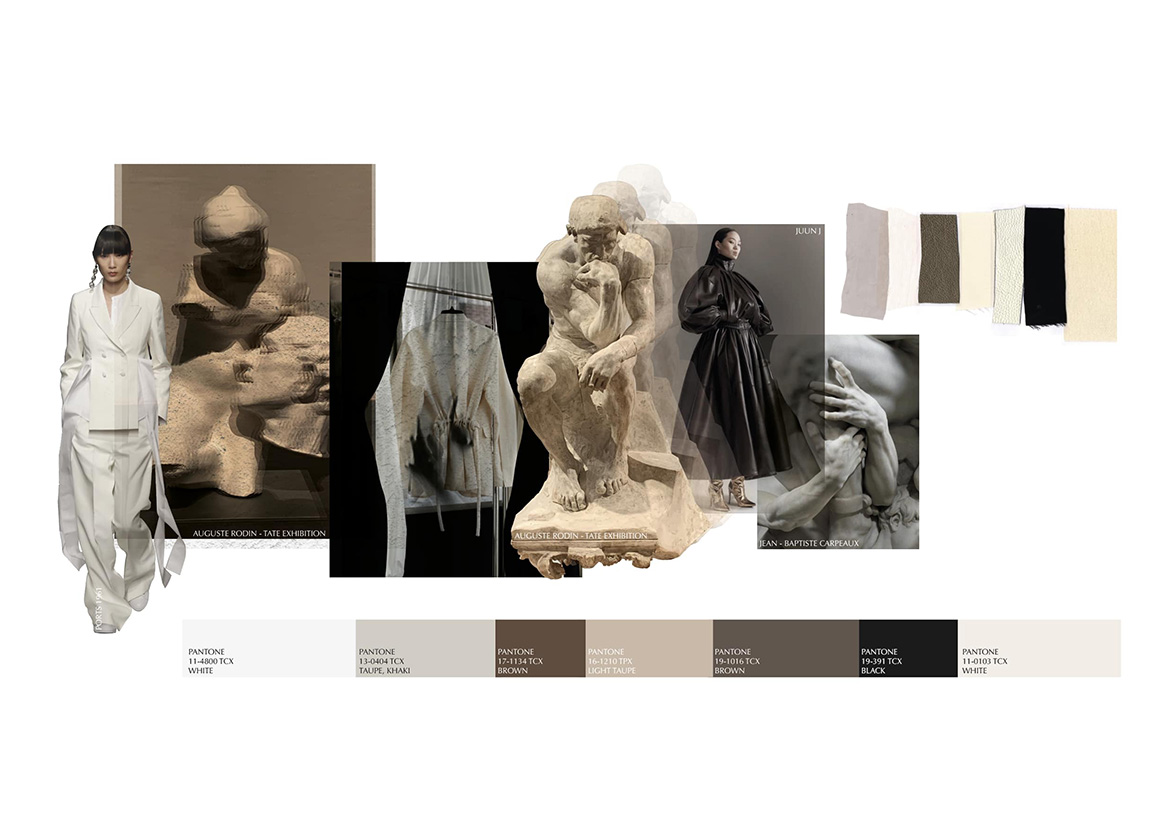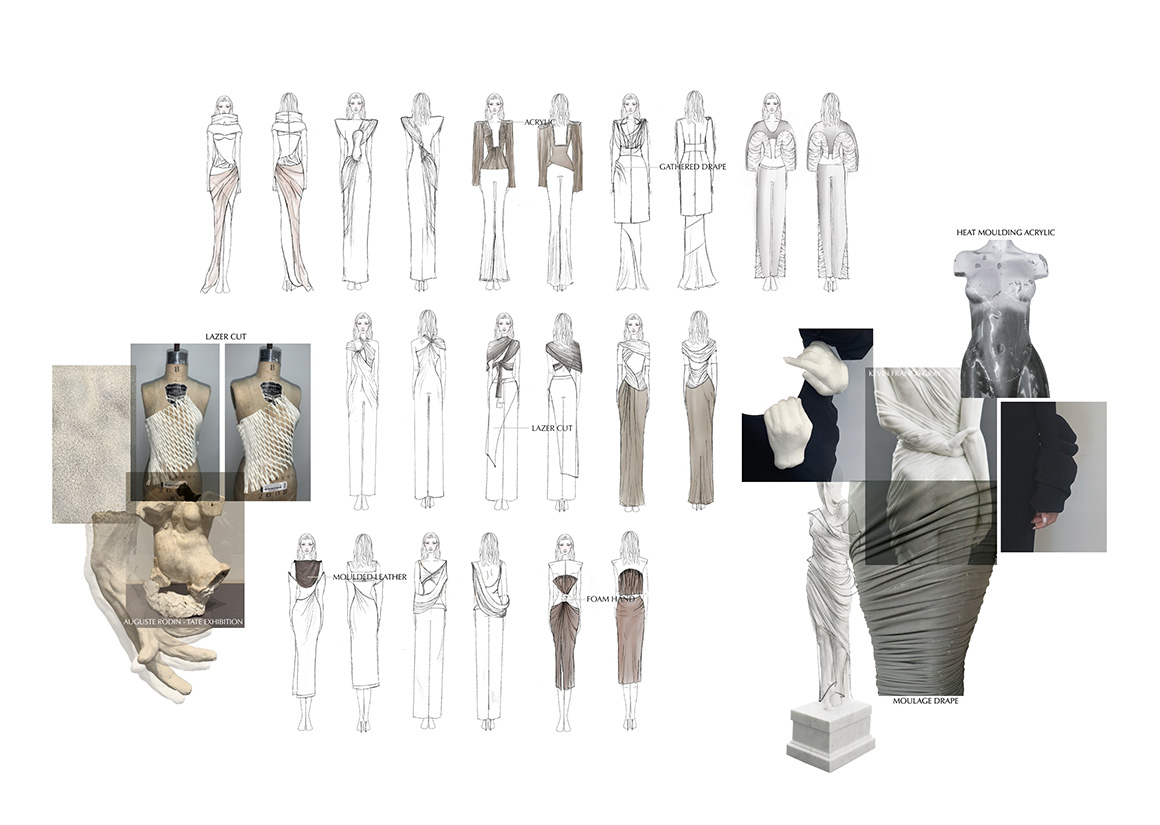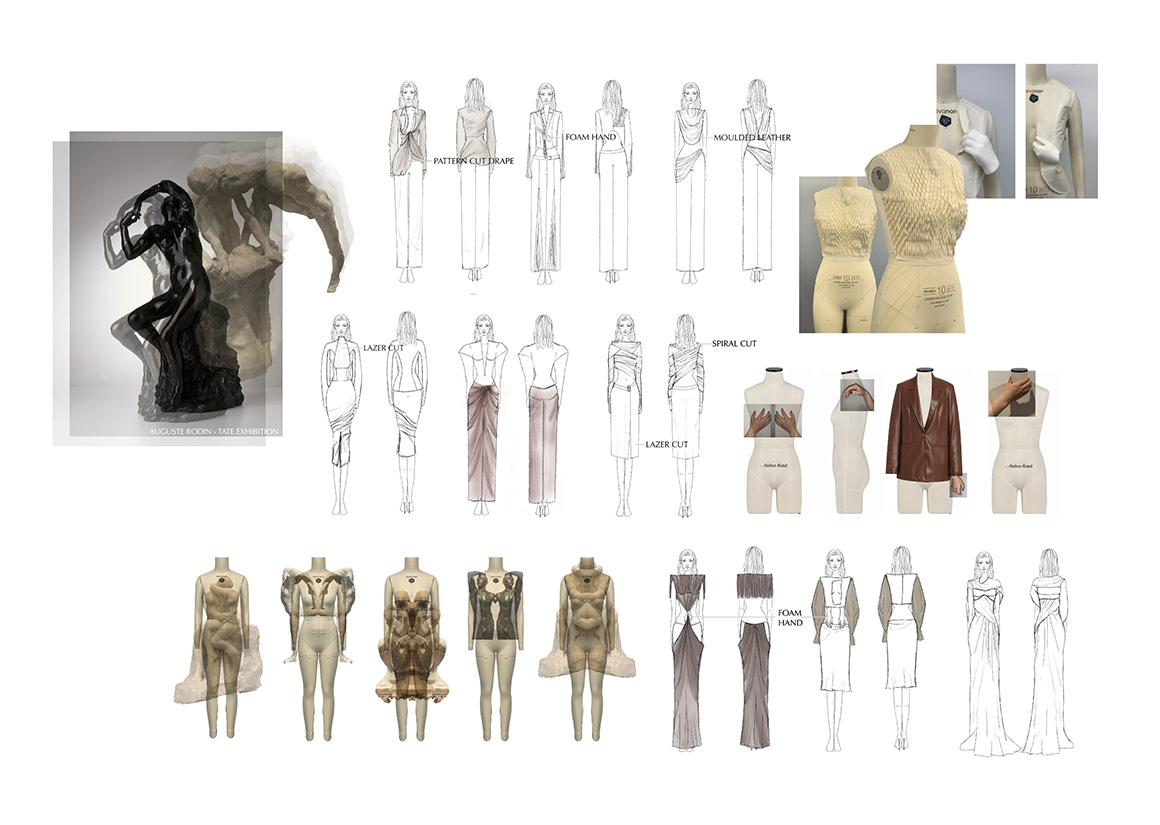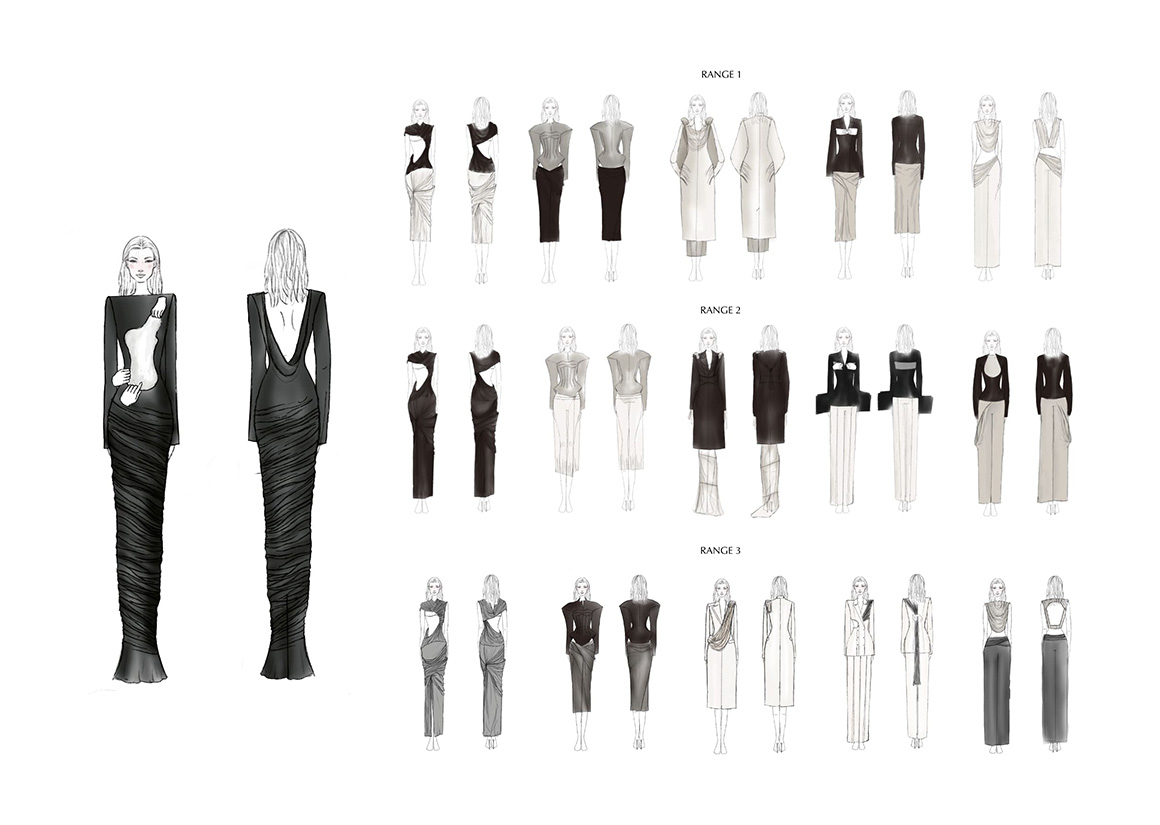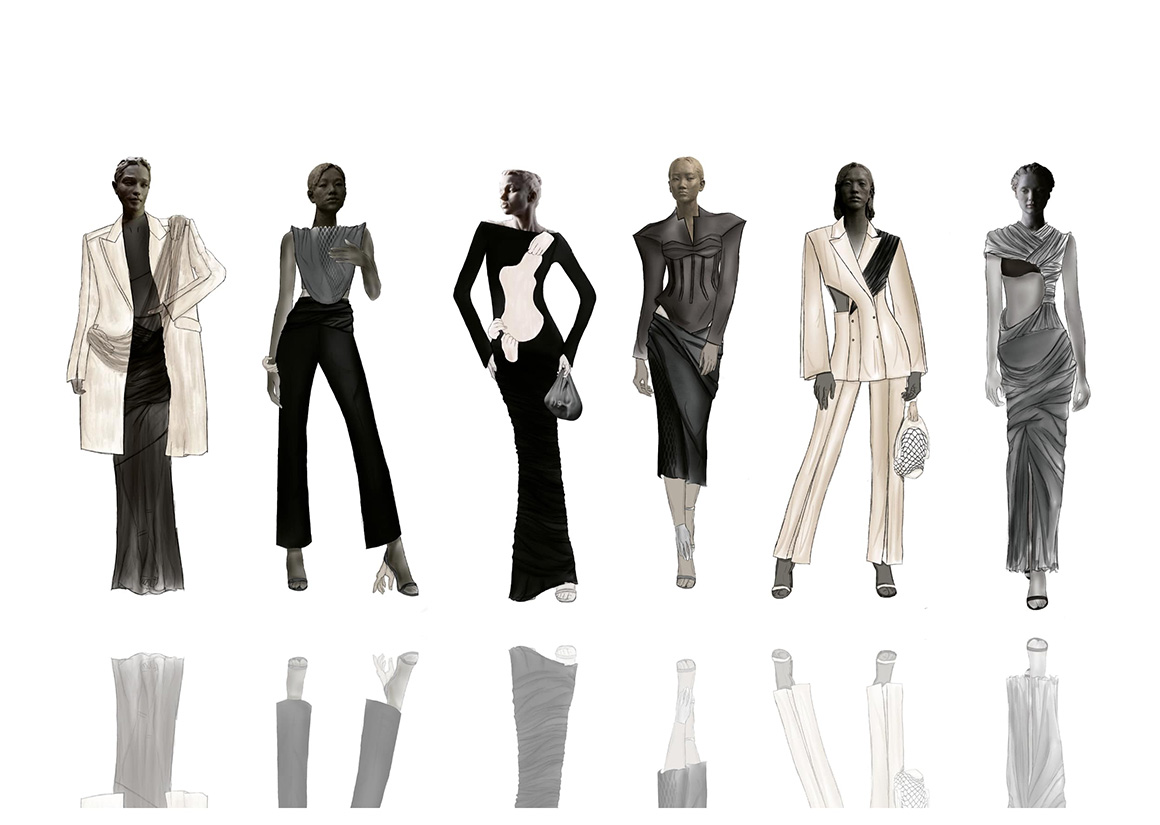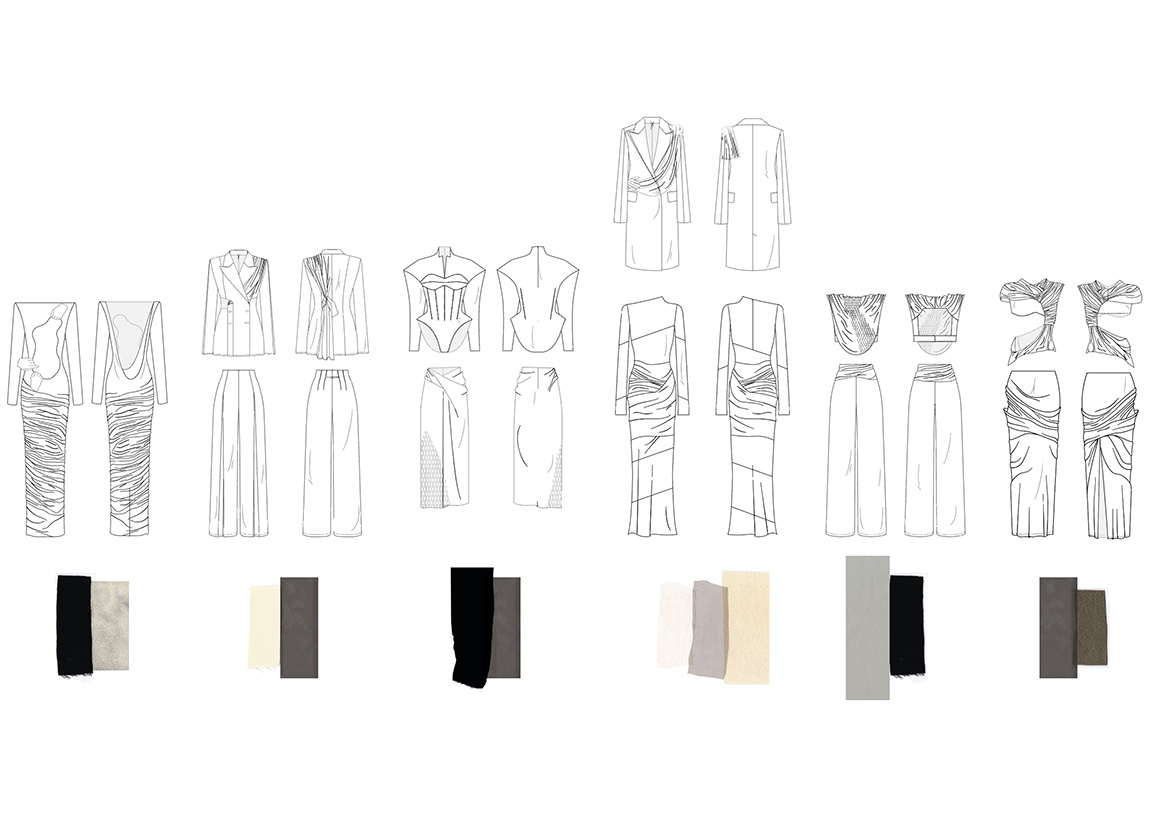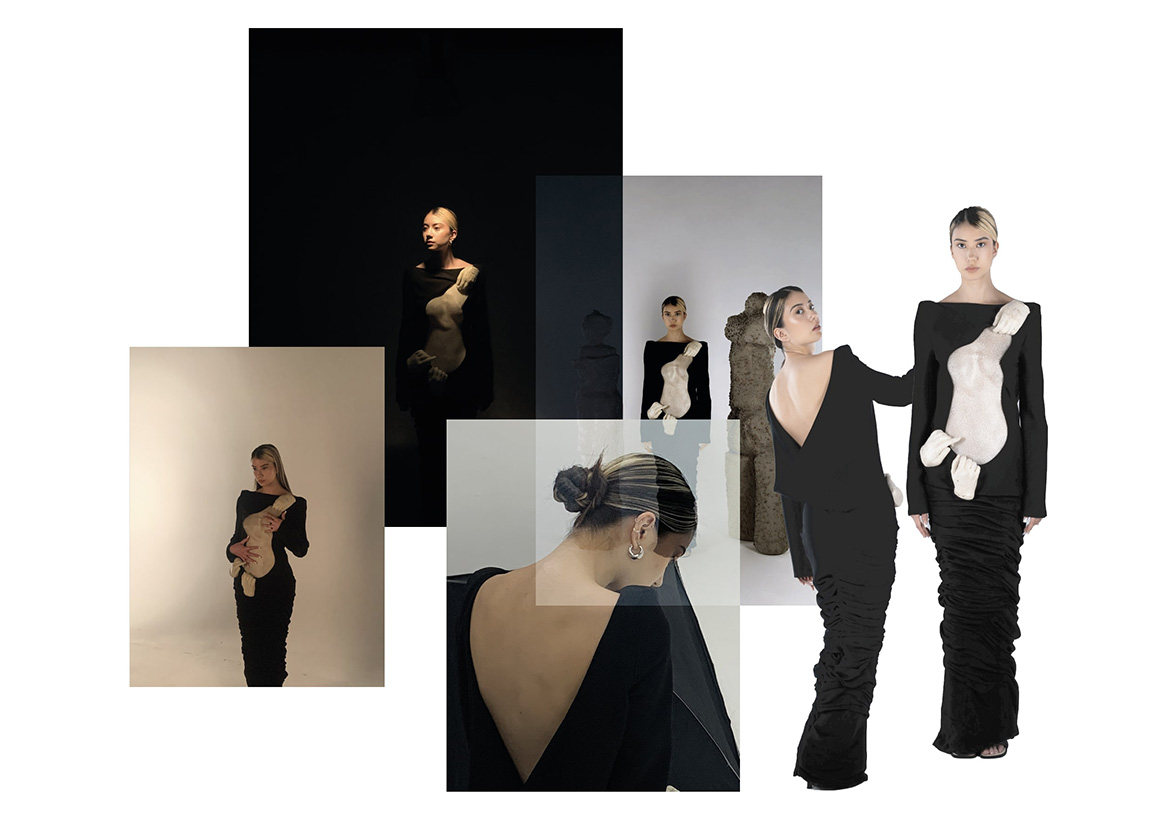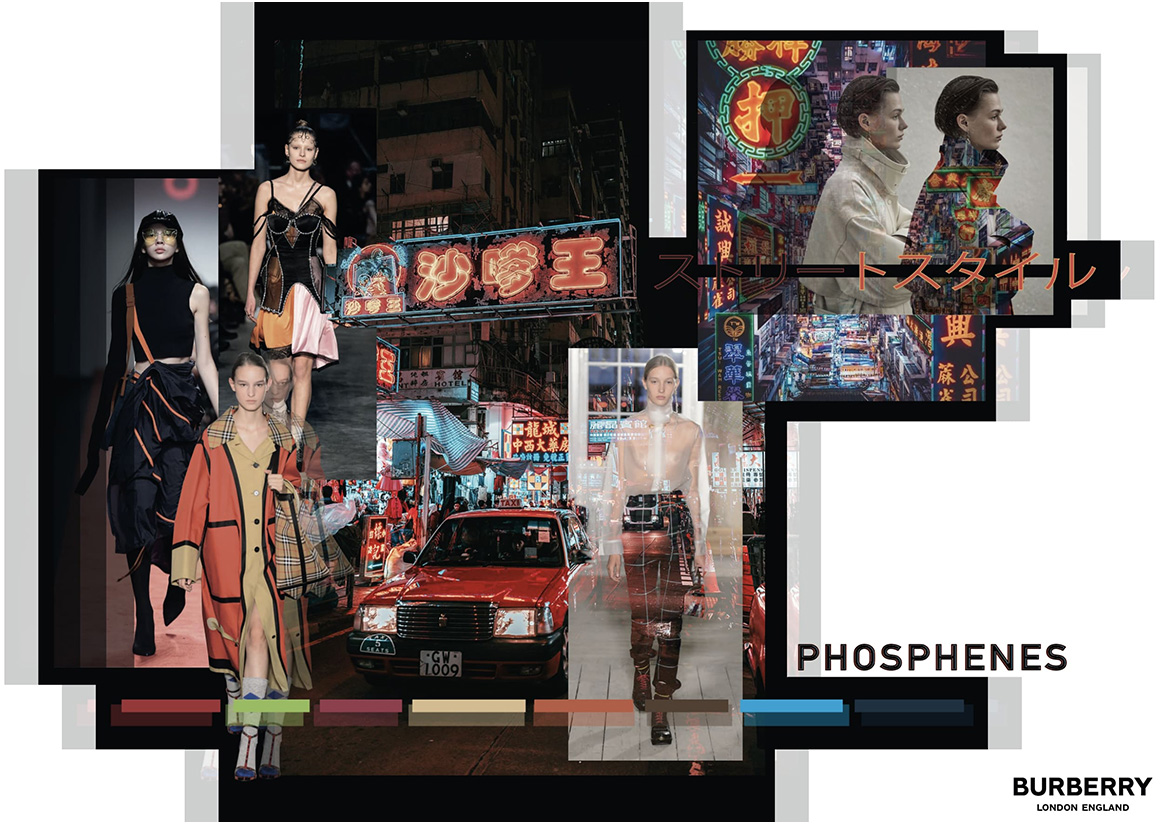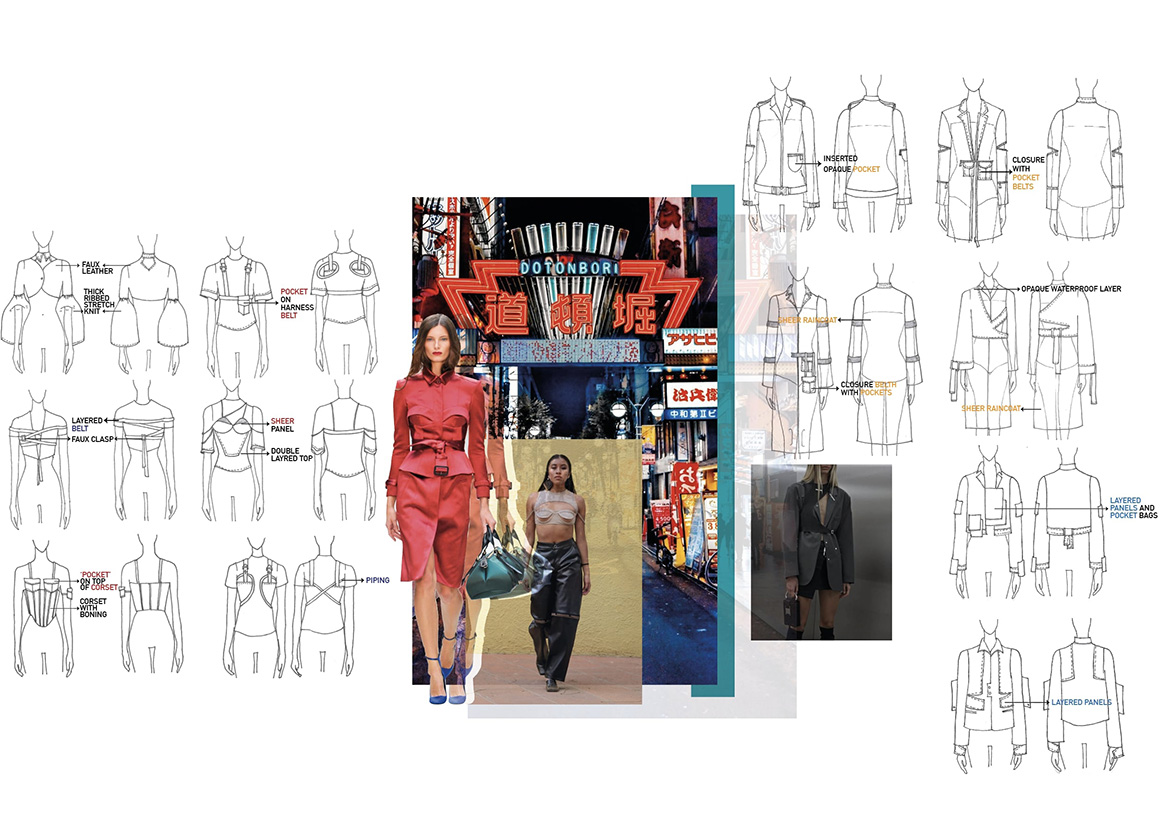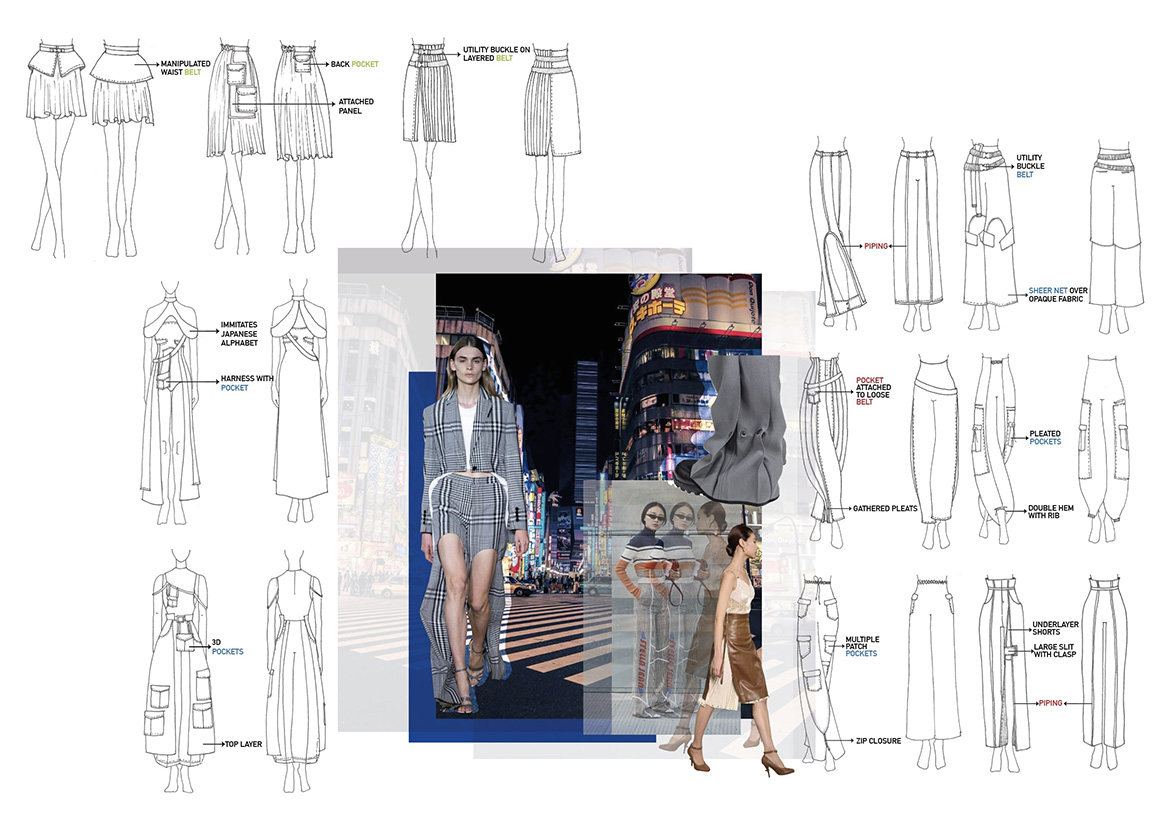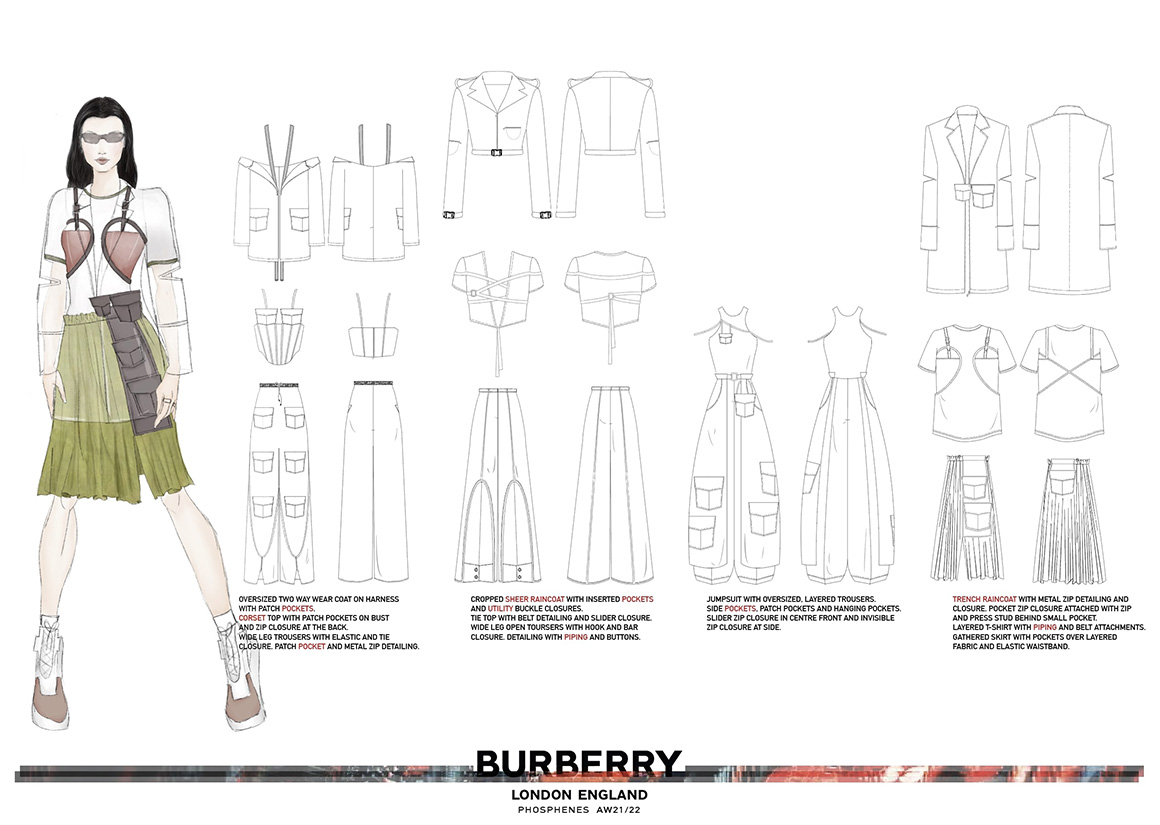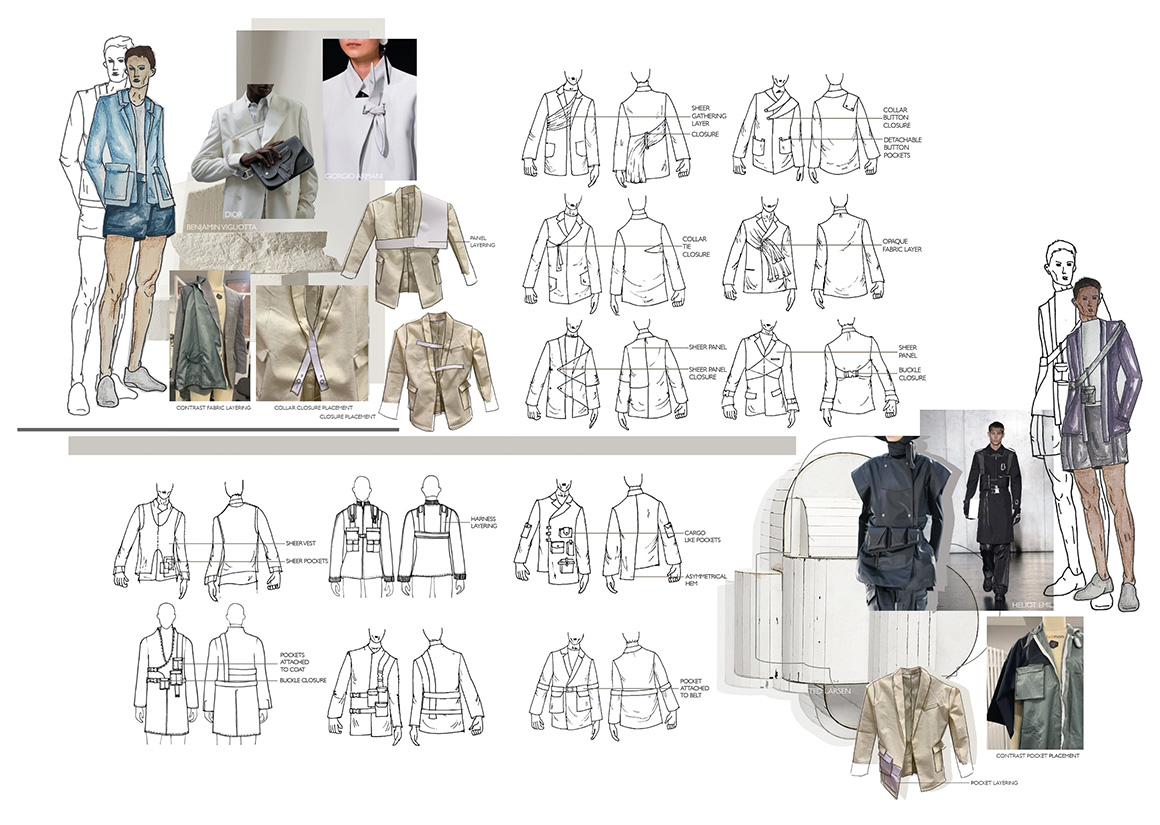
About Me
Fashion design through the perspective of Chinab, a graduate from LAU.
Chinab Narang specialises in womenswear and tailoring, utilising structure with craftsmanship. Her conceptual narratives emerge from mental and physical changes surrounding her. Combining it with pattern cutting, precision and an understanding of the human body, her vision identifies itself by blending sophistication with sensuality.
A background in art and psychology exposed me to varied perceptions of conceptual design. Visualising and interpreting fashion through the perception of art, I explored the complex relation of emotions and clothing. My work involves tailoring and craftsmanship, to reflect themes surrounding the psychological and philosophical self. While allowing myself to explore surrealism in fashion, I also understand conventional and commercial fashion. I define my design sensibilities by being imaginative rather than prosaic while merging creativity with wearability.
INSPIRATION
‘Ambedo’, Latin for a melancholic trance, one becomes completely absorbed in vivid sensory detail.
The collection dives into changing of emotions through sensory perception. This has been depicted by combining tailoring and draping, structure, and flow with surrealistic art. Surrealistic elements triggering tactile and visual receptors have been used instead of textures and colours. The inability of moving away from ‘touch’ by the 3D features creates contemplating emotions within. 3D sculptural hands embodied within garments and accessories are a recurring motif throughout the collection.
Use of colours have been discussed as psychological factors in fashion that play a key role in changing emotions. Contrary to beliefs, colours of clothing do not change emotions and feeling, leading to a neutral colour palette. Taking tones and hues from withering sculptures, the analogise of creams with black aided the sensibilities of the collection. These contrasting hues follow positive and negative spacing used to create balance in art, helps balancing other juxtaposing components.
MY WORK
PORTFOLIOS
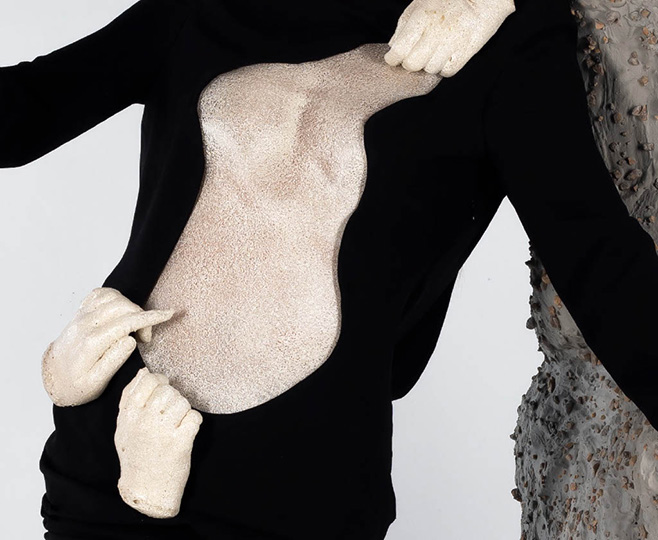
DETAIL
Synchronising surrealistic sculptural forms with streamlines silhouettes.
The juxtaposition of structure with movement is visible through still, yet naturally flowing poses of sculptural forms, heavily influencing the collection. The use of heavy wools and leather with lightweight chiffon makes this achievable. Structural silhouettes with stiff fabrics and materials portray the stillness in sculptures, contrasting with softer drapes formed by lightweight fabrics misleading the audience’s perception, to mimic feelings of Ambedo. Fragmented sculptures enacting with streamlined silhouettes made showcasing surrealism conceivable. The withering hands and acrylic plate imitate withering plaster, carrying history and craftsmanship with itself. The stiffness of the acrylic plate and softness of the hands intermingle with tactile and visual texture. The backbone of the collection is creating elements of contrast that deceive tactile and visual reception, leading to effects of ‘Ambedo’.

